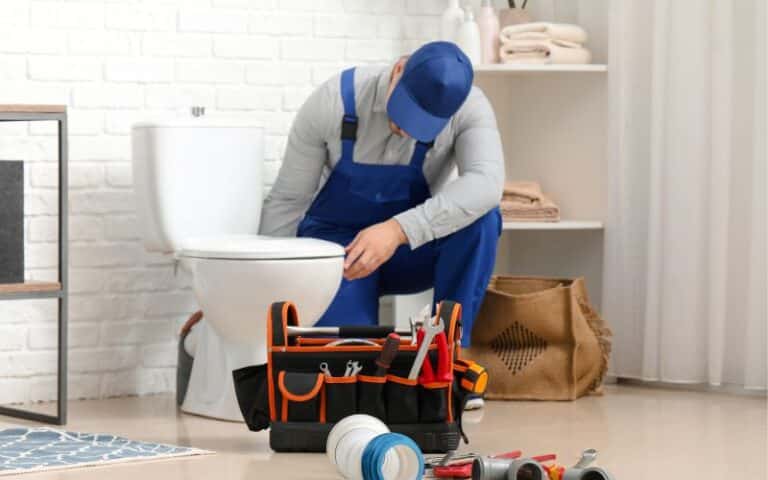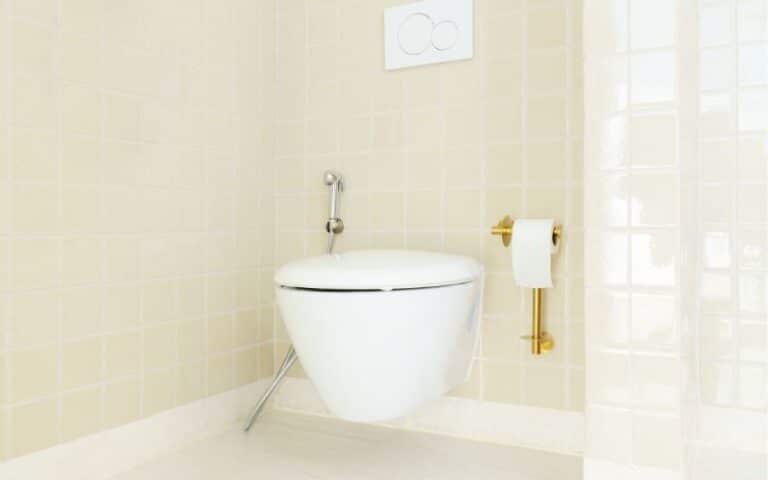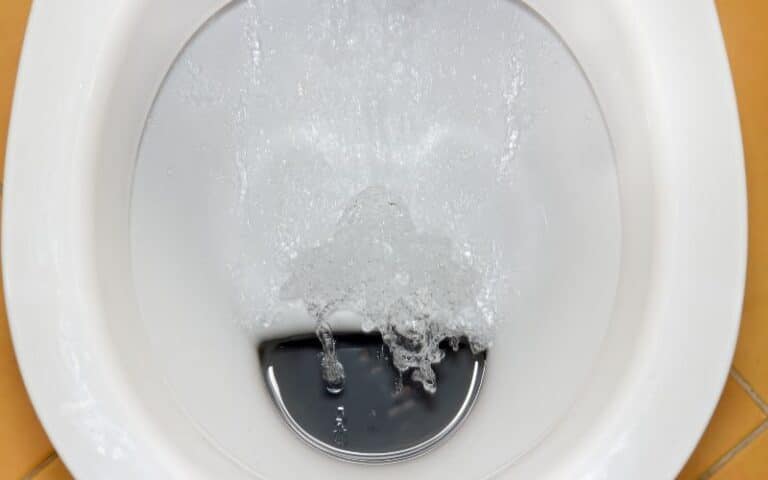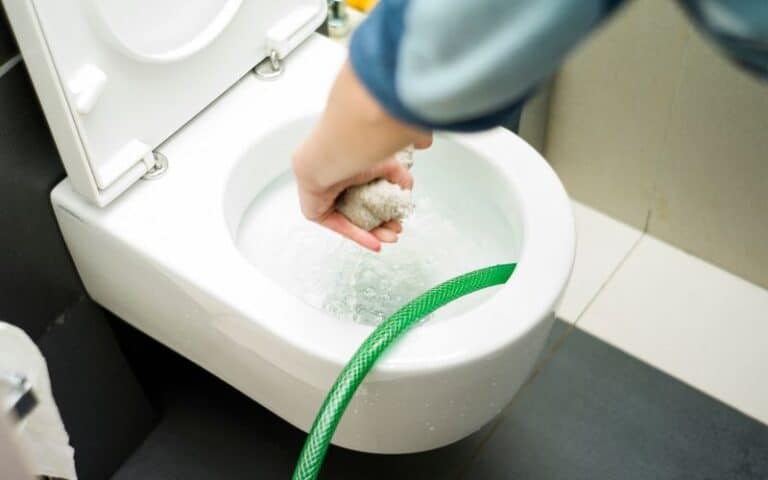When setting up a toilet for your bathroom, the specifications of the necessary components play an important role in its functionality.
Among these components, the toilet trapway is essential to your toilet performance and maintenance.
However, selecting the right trapway size can be daunting. In short, it’ll leave you wondering if the trapway size matters. Read on to find out.
The toilet trapway size matters and can affect the toilet’s performance. The toilet trapway is the part of the toilet that drains waste from the toilet bowl to the sewer system. Your toilet should have a trapway at least 2 inches in diameter, depending on your toilet size. Sticking to the appropriate size ensures that the toilet clears easily without clogging.
In this article, you will find out why your toilet trapway size matters and what trapway size is better for your toilet.
You will also discover if a bigger trapway size makes any difference and how the size affects your toilet clogging.
Does Your Toilet Trapway Size Matter?
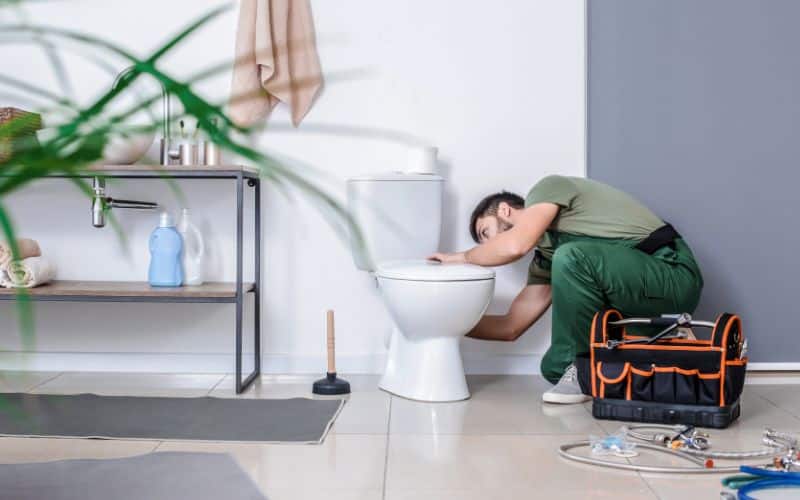
Your toilet trapway size matters because it plays an important role in the toilet’s ability to flush easily without clogs.
The trapway is a channel in the toilet that connects the toilet bowl to the drainpipe and transfers the waste to the sewer line during flushing.
The size of your toilet trapway can affect various aspects of your toilet’s functionality, some of which include:
#1. Flush Efficiency
If your toilet has a larger trapway size, it allows for a more efficient flush, reducing the need for multiple flushes.
Moreover, a wider trapway channel allows water and waste to move more freely, reducing clogs.
#2. Clog Prevention
A toilet with a small or narrow trapway is highly prone to clogging, which can cause waste and debris to get stuck, leading to frequent clogs.
These clogs will require constant plunging or more intensive measures to clear up. However, a larger trapway makes your toilet less susceptible to clogs.
#3. Maintenance
It will be easier to maintain if your toilet has a wider trapway. Since it is easier to flush, it will accumulate less residue, reduce the frequency of clogging, and prevent buildup.
When choosing a toilet, you should consider the amount of users in the environment, the bowl shape, and the flushing mechanism.
However, if you are uncertain which size fits your needs, contact a professional for more information on your trapway size.
What Trapway Size Is Best for Your Toilet?
The best trapway size for your toilet is about 1.7 to 2 inches trapway diameter. This size provides a good and efficient toilet performance.
A 2-inch trapway can clear most wastewater effectively while conserving water.
However, a toilet with a smaller trapway, such as a 1.5-inch trapway, will experience more difficulty flushing.
Conversely, if the toilet has a larger trapway, such as 2.5 inches, it will consume more water. Therefore, a trapway with a 1.7 to 2 inches size is best for your toilet.
Moreover, selecting the right trapway size for your toilet is necessary to ensure effective water disposal and prevent clogs.
You can measure your trapway by calculating the diameter of its lowest point, which you can find at the base of the toilet bowl.
However, to get the right size for your toilet trapway, you must consider some factors, like your plumbing system and household usage.
Here are some factors to consider when determining the best trapway size for your toilet:
#1. Plumbing System
Consider the capacity of your plumbing system. If you have an old pipe or plumbing system that is susceptible to clogs, you should consider a larger trapway size.
Moreover, a larger trapway is more advisable to minimize potential blockage.
#2. Household Usage
If the toilet is for multiple users or in a high-traffic area, using a larger trapway can prevent potential clogs. Consider the size of the household and the frequency of the toilet usage.
#3. Water Efficiency
Some toilets have smaller trapways to reduce water consumption and increase efficiency.
Though this trapway size is effective, it is necessary to ensure a balance of water efficiency and effective waste removal.
Is a Bigger Trapway Size Better?
Though a larger trapway may efficiently dispose of more waste, it is not necessarily better for all types of toilets.
A bigger trapway also means increased water usage, which may not be an ideal option for your bathroom.
Additionally, a larger trapway can increase the cost of the toilet, which means it might be above your budget.
Here is a table showing the pros and cons of using a bigger trapway size:
| Pros | Cons |
|---|---|
| Less likely to clog due to improved waste and water flow. | You might need higher water usage for proper waste removal. |
| Improved flushing performance. | Larger trapways might be more visually noticeable. |
| Requires less frequent plunging. | It may come at a higher cost. |
| Better suited for households with varied flushing habits. | It may not fit well in compact or space-restricted bathrooms. |
Moreover, you should also consider the toilet’s overall design, flush system, and water flow dynamics.
Finally, a larger trapway can occupy more space in your bathroom, so it is not a better option if it is not excessively large.
To help you with a clearer decision-making process, here are some factors you should consider:
#1. Reduced Clogging Risk
A large trapway size allows the passage of larger water and also prevents clogs. It is also beneficial in households with a higher frequency of toilet usage or in commercial spaces.
#2. Efficient Waste Removal
A bigger trapway helps to dispose of waste efficiently and quickly, reducing the chances of clogs or water wastage.
Moreover, if your toilet has a larger trapway, it can reduce the need for frequent maintenance due to clogs.
#3. Space Constraints
A larger trapway can offer more convenience, but it may not be practical for all bathroom types.
If your bathroom is small, your toilet might take up more space due to the significantly larger trapway, which will also affect the bathroom layout.
#4. Water Efficiency
Some toilets with large trapways use more water per flush for effective water removal. This issue means you would need more water for flushing and spend more on water bills.
Does Your Toilet Trapway Size Affect Clogging?
The trapway size of a toilet can affect your toilet’s clogging. The trapway is the channel inside the toilet connecting the bowl to the drainpipe.
The size and design of the trapway play an important role in the toilet’s ability to flush effectively without clogging.
A wider channel in the trapway can also prevent clogging by allowing more air to enter the trapway. In this way, the air creates a vacuum that pulls the water down the drain.
In addition to the toilet’s trapway size, the flushing power of the toilet can also affect its ability to clog. With a stronger flush, you can clear the trapway more effectively.
Conversely, a weaker flush may not be able to move the water through the trapway with ease.
A toilet with a larger trapway diameter is less likely to experience clogs.
Moreover, its size allows for a more efficient water flow, reducing the chances of getting toilet paper and solid waste stuck.
The large space in the channel also gives more room for water to create a strong flushing power, clearing the bowl effectively.
On the other hand, a toilet with a smaller bowl may be more prone to clogs due to the restriction of waste movement.
Additionally, solid wastes may not be able to pass through the trapway smoothly, which can cause blockages in the toilet trapway.
The design and shape of the trapway also play a role in clogging. Some toilets have a smoother and gradual curve, making it difficult to trap debris in the trapway channel.
However, some toilets with sharp angles or rough surfaces can contribute to clogging by accumulating water in spaces in the channel.
Apart from the size and design, the toilet’s flushing power can cause clogging. A larger trapway ensured the flow of water effectively.
A weaker flush, often due to a small trapway, may not remove water properly, leading to clogs in the trapway.

